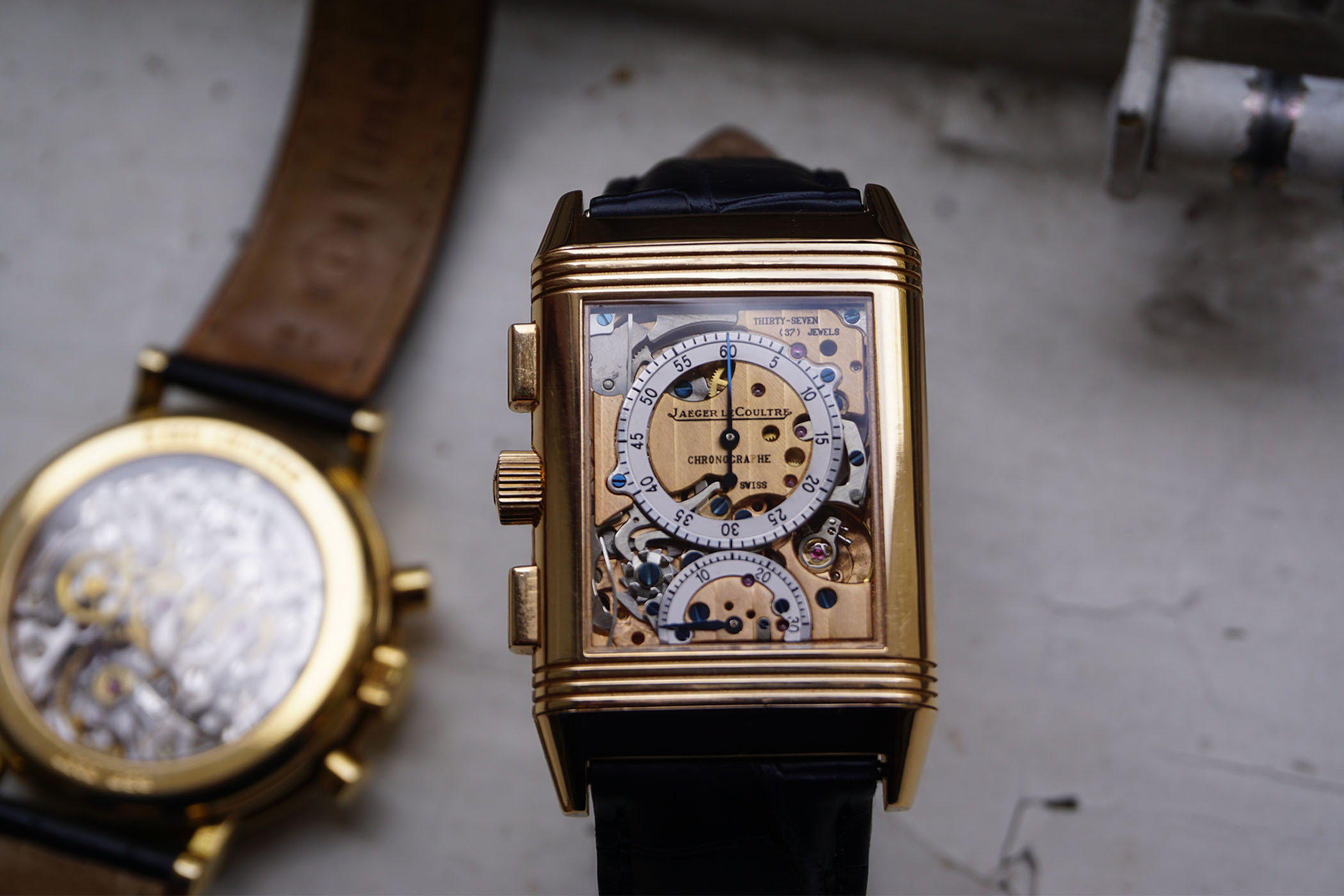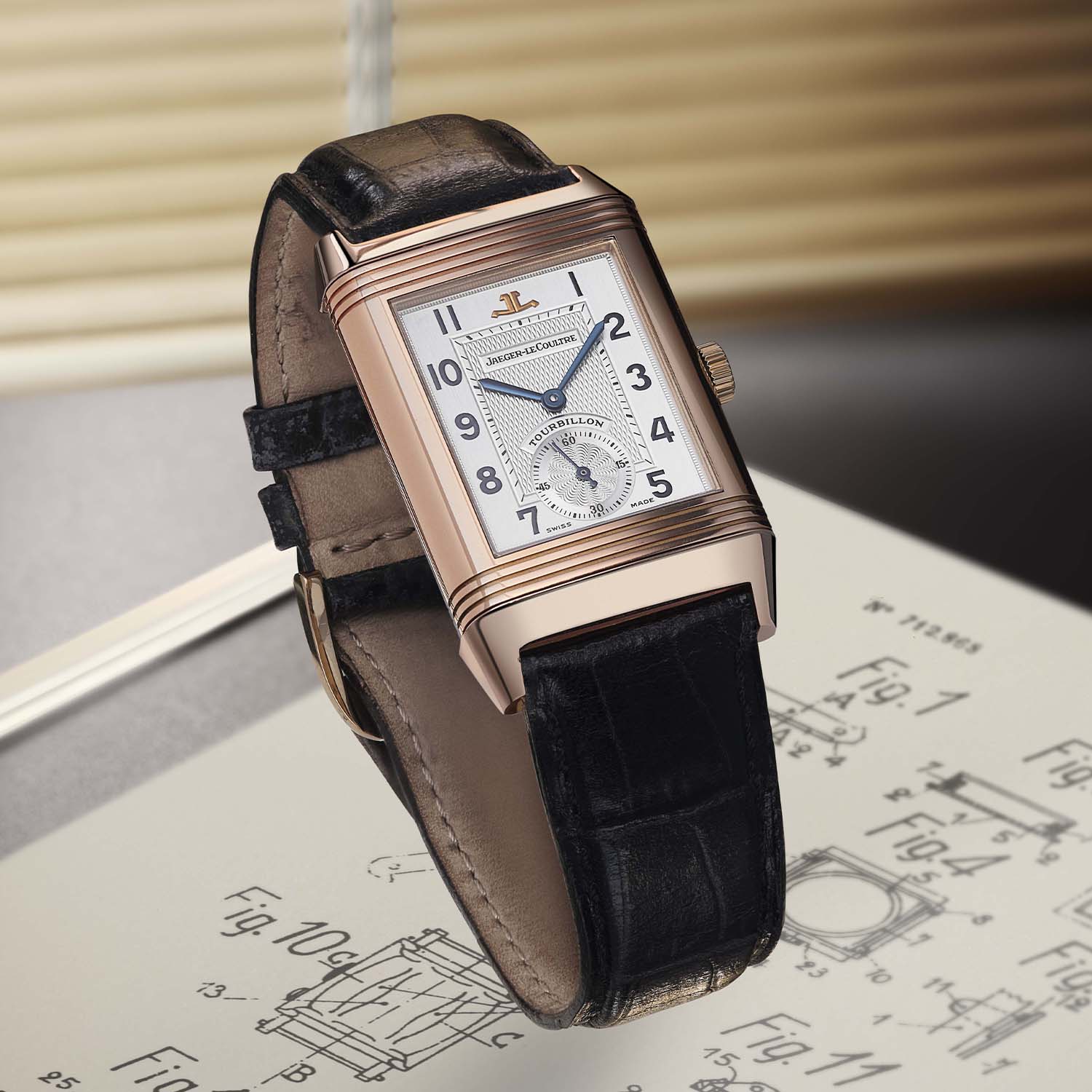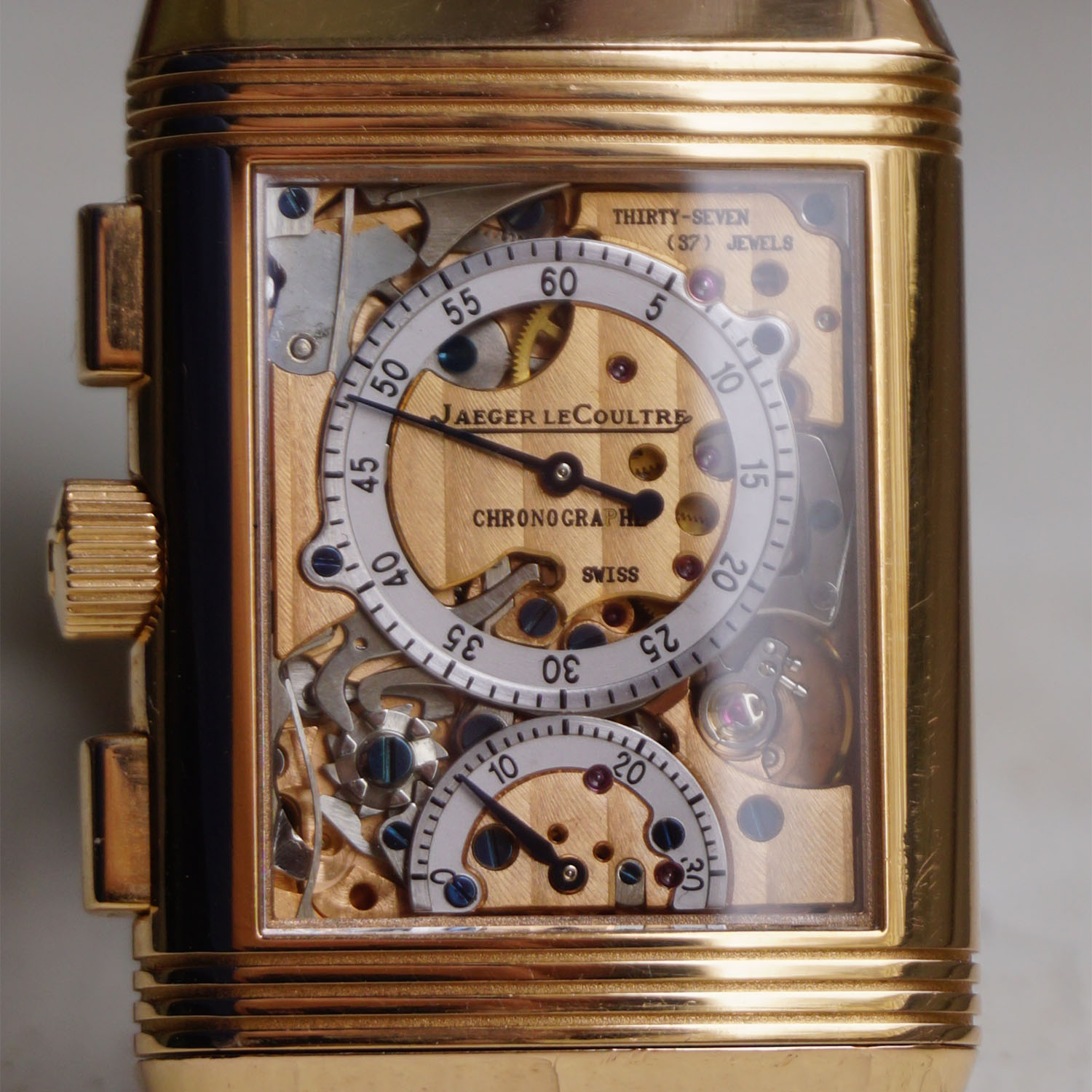The Whole Story Behind The Creation of The Jaeger-LeCoultre Reverso Chronographe Rétrograde
Diving into the zeitgeist of the 1990s and the six anniversary Reverso watches.

Welcome back to The Collector’s Corner. Earlier this year, we took a detailed look at one of the most impressive chronographs developed from the ground up during the 1990s, namely the Reverso Chronographe Rétrograde. This, back in an era when in-house wasn’t yet what it is today, was nothing short of an achievement, specifically considering we’re talking chronograph. This article is something a little different from the usual content in The Collector’s Corner. I recently had the chance to talk with Matthieu Sauret, Product Marketing & Heritage Director at Jaeger-LeCoultre and Philippe Vandel, movement designer and constructor at Jaeger-LeCoultre and to discuss the development of the Reverso Chronographe Rétrograde and the zeitgeist of the 1990s. I am overjoyed that I can now share the conversation with you.
Editor’s Note: interview has been edited for clarity.
Suhrud, MONOCHROME – Dear Matthieu, and dear Philippe, thank you so much for taking the time to talk with MONOCHROME today!
Matthieu Sauret – My pleasure! It is always a joy to hear Philippe share his stories and to learn more about Jaeger-LeCoultre after the quartz crisis. Philippe, would you like to introduce yourself?
Philippe Vandel (translated by Mr Sauret) – I am a movement designer and constructor at Jaeger-LeCoultre. I started my career in 1981, as a movement prototyper. In 1985, I moved to Frédéric Piguet, now Blancpain, specializing in complications, particularly chronographs. I joined Jaeger-LeCoultre in 1991 – at that point, the Reverso Soixantième had already been completed – and the first watch I started work on was the Reverso Tourbillon, the second of the anniversary series.
Matthieu Sauret – and I am the Director of Product Marketing & Heritage at Jaeger-LeCoultre.
As an introduction, let me set the scene by saying that the quartz crisis hit Jaeger-LeCoultre particularly hard, as you know. At the time, Jaeger-LeCoultre was known as the “watchmaker of watchmakers” – something that continues to this day – providing amazing calibres such as the calibre 920 to brands like Audemars Piguet, Vacheron Constantin, Patek Philippe. The Calibre 920 was to some extent responsible for the success of these watches because though it was a workhorse movement, it was still incredibly fine. For Jaeger-LeCoultre, however, being a movement development for other watchmakers necessitated a large workforce – at that time, some 800 people were employed at the company – and these people had to be given work even in the midst of the crisis!
When Messrs. Günter Blümlein and Henry-John Belmont took the helm of Jaeger-LeCoultre, they were tasked with bringing the company back from the ashes. The Reverso was pivotal to this and was reintroduced to the collection in the beginning of the 1980s. The goal of the next decade was to create a buzz with something incredible. This strategy took the form of two pillars:
- The Master Control, with its calibre 899 and the “1000 hours control” seal of quality
- The Reverso complications
Are there any stories or tidbits you can share about working at 1990s Jaeger-LeCoultre? Any memorable encounters with Günter Blümlein? Can you describe the atmosphere in the team while you were working on this project? It was a groundbreaking effort – relearning complications, adapting them to the rectangular case, learning and using computer-aided design (CAD) for the first time, etc…
Philippe Vandel – I had already seen and worked at the computer at Frédéric Piguet, but the Reverso Tourbillon was the first watch that I and Jaeger-LeCoultre worked on fully on CAD. CAD was much quicker to work with, even though back then it was still only two-dimensional, like a drawing board. Even though we used a computer, it was necessary to keep the third dimension in mind.
The atmosphere at the company was very different from what you might imagine it was. You can compare it to a patient who has just gone through a difficult operation. The patient, though tired, is nonetheless happy and excited to be alive and well. The watch industry after the quartz crisis is the patient in our example, and so there was an atmosphere of “living life at the fullest”. I saw this time as having a great atmosphere and ambition in the company. I felt that I would be able to create new complications, ones that had never been made before because Jaeger-LeCoultre was just grasping the potential of the second face of the Reverso.

Henry-John Belmont was great because he was able to put the team together and share the success of the Reverso with everyone involved. I had been changing companies every 4-5 years until then, but I knew that I had found my safe place as soon as I joined Jaeger-LeCoultre. I’ve been here 31 years now!
Matthieu Sauret – And this spirit of creating new and wonderful complications continues to this day – Philippe, in fact, worked on the Reverso Quadryptique (Editor’s Note: check out the 2021 release here).
Philippe Vandel – As for stories… I used to be a bit of a troublemaker back in the day, and colleagues used to joke that it’s so nice that the CEO (Henry-John Belmont) visits us every day. The joke goes on that it’s only because I joined the company!
Please explain the intricacies of the retrograde minute: chronograph minutes wheel at 2 o’clock on the verso, retrograde mechanism at 6 o’clock… what was the challenge here?
Philippe Vandel – The greatest challenge was the precision needed to synchronize the retrograde minutes counter jump with the seconds chronograph hand. We had to simplify the movement to increase precision – the more parts you have, the more play you have between them, which is going to create an amplified effect on the retrograde. For the first time ever, we used a small component called the “excentrique” for setting the precision of the retrograding minutes to the chronograph seconds, instead of regulating this by hand alone. Now, these components are used extensively.
The jump of the seconds hand at the start is another certificate of quality – the larger the teeth of the wheels that mesh together when the chronograph is operated, the bigger the jump when the chronograph is actuated. We worked with a wheel with teeth that are four-hundredths of a millimetre.
This brings me to another story. After the movement had been designed, we needed to discuss the parts needed with the team making these components. You have to remember that they had not made complications for 20-30 years and had gotten used to making standard watchmaking components. They were sometimes a little bit reluctant to start something new and wild!
I tried to find patents filed for the Chronographe Rétrograde, especially relating to the retrograding mechanism for the chronograph minutes but could not find any. Were any filed?
Matthieu Sauret – It was a different time back then, not like now when there are several patents for every new watch release. There was also a significant cost associated with every new patent application. It was a simpler age of pure watchmaking back then and we did not have the means to check every patent application as we do today.
I have read accounts that the reception to this watch was lukewarm and that the limited run took a number of years to sell. Was this disheartening for the design and engineering team?
Philippe Vandel – What matters to me is that Henry-John was very happy. At that time, he said: “Congratulations. What you’ve done in two years is to make complications happen again”.
Matthieu Sauret – At the time, these watches were more a statement of our know-how to sell the Reverso, to make collectors wonder at what else the Reverso could do. The anniversary series was, in a way, less about the commercial aspect and more about building excitement.
Complications were not as big then as they are now. Asia was not a huge market – there was Japan at the time, of course, but it was not like it is now. The suitcase with the six watches [Editor’s Note: the full set of the Reverso complications] is a legend and everyone who loved watches was talking about them. Also, between 1991 and 2000, there were some years without the launch of a special anniversary model. When there was no Reverso presentation at Basel, Jaeger-LeCoultre would put one of the anniversary models in a display case with a question mark, as if to ask: “what will we do next?”
Does it bother you to hear people claim, to this day, that the Datograph L951.1 was the first integrated chronograph calibre built from the ground up after the quartz crisis? That honour should go to the calibre 829, as work commenced in 1992 and the watch was completed in 1996.
Matthieu Sauret – We have not heard this! In the 1990s, Lange had just been brought back to life and was at the time something like a personal project for Günter Blümlein. Lange was the little sister company to Jaeger-LeCoultre, and much as there should be no competition with a younger sibling, so too there was no competition between JLC and Lange. In fact, there was quite a lot of cooperation – Jaeger-LeCoultre gave Lange the big date complication, after all.
Was the retrograding chronograph minutes born out of necessity (too little dial space for a full circular minutes counter? Or was it by choice to have retrograde minutes?
Philippe Vandel – At the time, even though Günter Blümlein and Henry-John were the team leaders, they decided some things behind closed doors and approached the team later with requests.
Right after I finished the Reverso Tourbillon, Henry-John came to me with a sketch of the caseback and the movement of the Chronographe Rétrograde and asked, “can we do something like this?”. I don’t know if this sketch came from the mind of Henry-John or from that of Günter. Also, Henry-John wanted the chronograph on-off indicator on the dial so you could see from across the room that this was the chronograph, not the minute repeater or the perpetual calendar. I started working on the chronograph as soon as I had the sketch, so in 1992.
Was the Grand Taille case size decided upon prior to the decision to make the six complicated rose gold Reverso watches?
Matthieu Sauret and Philippe Vandel – The Grand Taille was the third case size of the Reverso at the time. There was the ladies’ size, then a size that approximates the modern classic size, and finally the Grand Taille, which was born with the Reverso Soixantième of 1991. As the Grand Taille was quite a large watch for the time, the goal was also to stay within the bounds of this case and not to go any bigger.
In addition to the limited run of 500 pieces, a smaller run was produced specifically for trade fairs (1996 Basel, for instance). Are there records of how many of these “prototypes” were produced?
Matthieu Sauret – A total of 15 prototype pieces were made for various trade shows, inscribed with “Basel” – these were watches that were generally gifted to directors and other senior management.
Is there any chance we can see the retrograde chronograph complications return to the Jaeger-LeCoultre collection?
Matthieu Sauret – Well, you know I cannot comment on that, but there are many fans of the Reverso at the Maison and it remains the darling of the company. I have myself worn the Reverso Chronographe Rétrograde for several months now. You can be sure that exciting things are coming!
Of the six Reverso anniversary models, which is your personal favourite?
Philippe Vandel – The most appreciated at the time was likely the Tourbillon, but it was not too much of a challenge! My favourite has to be the Géographique, which was one of the more overlooked at the time, but which was the far more difficult watch to make.
Matthieu Sauret – The chronograph has to be my favorite! This is a watch with two very, very interesting faces with an aesthetic on each face that remains true to the spirit of the Reverso. Everything is so amazing about this watch. Even though I have worn it for six months now, I continue to discover something new about it – for instance, there is a sharp click for the start/stop chronograph operation. This comes from the actuation of the column wheel. The reset does not have this – it is a soft reset, which was a deliberate choice during its design. The reset in any chronograph involves a “release” of the chronograph mechanism – it should not feel forced, and it should most definitely not click!
Dear Matthieu, and Philippe, thank you so much for taking the time today to talk with us.
Matthieu Sauret and Philippe Vandel: Thank you!
Special thanks to Jaeger-LeCoultre, Matthieu Sauret, and Philippe Vandel for taking the time to sit down with us and share their valuable insights and stories.





















1 response
Beautiful, seminal, underappreciated watch. Very interesting read, thank you.